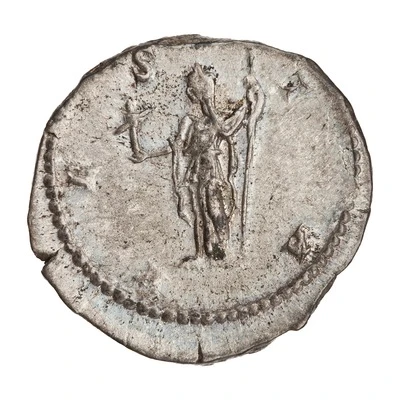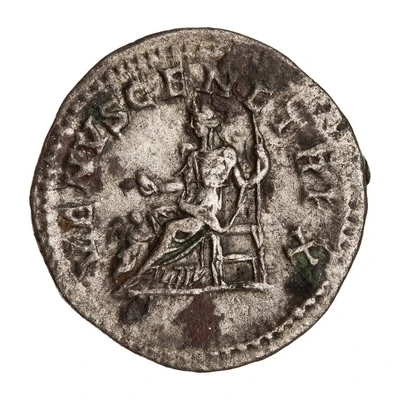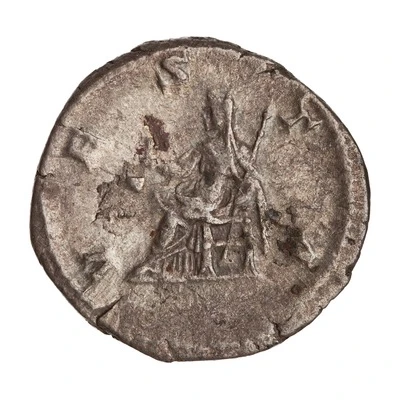


© American Numismatic Society (ANS)
Denarius - Julia Domna VESTA; Vesta
| Silver | 3 g | 20 mm |
| Issuer | Rome › Roman Empire (27 BC - 395 AD) |
|---|---|
| Emperor | Caracalla (Marcus Aurelius Antoninus Caracalla) (198-217) |
| Type | Standard circulation coin |
| Years | 211-217 |
| Value | 1 Denarius |
| Currency | Denarius, Reform of Augustus (27 BC – AD 215) |
| Composition | Silver |
| Weight | 3 g |
| Diameter | 20 mm |
| Shape | Round (irregular) |
| Technique | Hammered |
| Orientation | Variable alignment ↺ |
| Demonetized | Yes |
| Updated | 2024-10-05 |
| Numista | N#273682 |
|---|---|
| Rarity index | 90% |
Reverse
Vesta, draped, standing left, holding palladium in right hand and sceptre in left hand.
Script: Latin
Lettering: VESTA
Comment
Mass varies: 2.33–3.41 g;Diameter varies: 18.5–30 mm;
Example of this type:
American Numismatic Society (ANS)
Source:
Online Coins of the Roman Empire (OCRE)
Interesting fact
The Denarius - Julia Domna (VESTA; Vesta) coin features an image of the Roman goddess Vesta on the reverse side, which is unusual for a coin issued during the reign of Emperor Septimius Severus. Vesta was not a commonly depicted deity on Roman coins during this period, and her appearance on this coin may indicate a personal interest or connection of the emperor or his family to the goddess. This coin may have been issued to commemorate a specific event or to promote the cult of Vesta, highlighting the importance of the goddess in Roman religion and culture.



